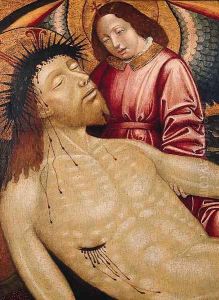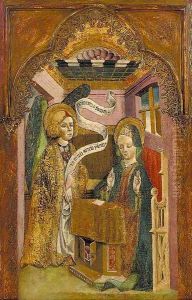School Of Avignon Paintings
The School of Avignon refers not to a single artist but to a group of artists and a distinctive style that flourished in Avignon, France, primarily during the 14th and into the 15th century. This period coincides with the Papal Schism (1309–1377), when the papacy was based in Avignon, making the city an important cultural and spiritual center. The Avignon Papacy attracted artists, intellectuals, and craftsmen from across Europe, fostering a unique artistic environment.
The School of Avignon is characterized by its highly decorative style, rich in religious symbolism and marked by an intense spirituality. Artworks from this period and region often feature intricate details, vivid colors, and elaborate gold leafing, reflecting the influence of both French and Italian artistic traditions. The artists associated with this school were known for their frescoes, panel paintings, and manuscript illuminations, which depicted biblical scenes, saints, and episodes from the lives of Christ and the Virgin Mary with a distinctive elegance and emotional depth.
One of the most notable contributions of the School of Avignon is its influence on the development of Gothic art, particularly in the realm of manuscript illumination. The luxurious and detailed style of these illuminated manuscripts served as devotional objects as well as status symbols for their wealthy patrons. Through these works, the School of Avignon played a crucial role in the transition from medieval to Renaissance art styles in southern France.
Despite its significance, the identities of many artists associated with the School of Avignon remain anonymous, and their works are often attributed to the school rather than to individual artists. However, the legacy of the School of Avignon lies in its contribution to the evolution of European art, bridging the gap between the medieval period and the burgeoning Renaissance with its unique blend of spiritual fervor and artistic innovation.
As the 15th century progressed and the papacy returned to Rome, the influence of the School of Avignon waned, but its impact on the development of early Renaissance art in France and beyond continued to be felt. The fusion of Gothic and early Renaissance elements championed by the School of Avignon would lay the groundwork for future artistic endeavors in the region, marking an important chapter in the history of European art.

